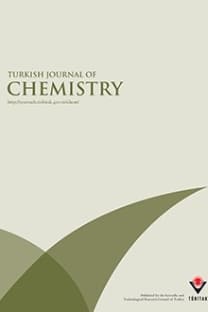Novel bis(aminoalcohol)oxalamide organogelators and their diglycolylamide analogs: evaluation of gelation efficiency in various organic fluids
Gelation, self-assembly, low-molecular-weight organogels infrared, NMR spectroscopy, hydrogen bonding, chiral amidediols,
- ISSN: 1300-0527
- Yayın Aralığı: 6
- Yayıncı: TÜBİTAK
İbrahim TURAN, Kerim SERBEST, Melek ÇOL AYVAZ, Yüksel ALİYAZICIOĞLU, Selim DEMİR, Bayram DURAL, Kaan KARAOGLU
Vivian JONASI, Kaina MATINA, Upenyu GUYO
MEHMET ÇOLAK, DENİZ BARIŞ CEBE, NECMETTİN PİRİNÇÇİOĞLU, HALİL HOŞGÖREN
Experimental and computational studies on the absorption properties of novel formazan derivatives
Gülşen TÜRKOĞLU, M. Emin ÇINAR
Synthesis and antinociceptive activities of some novel benzimidazole-piperidine derivatives
Özgür Devrim CAN, Ümide DEMİR ÖZKAY, Nazlı TURAN, Betül KAYA ÇAVUŞOĞLU
The multiple effects of organoclay and solvent evaporation on hydrophobicity of composite surfaces
Ahmet GÜRSES, Hac Hasan YOLCU, Rabah BOUKHERROUB
BERRİN TOPUZ, ŞENNUR MERVE ADANUR, ARDA YALÇUK
Hayriye GENÇ, Mustafa ARSLAN, Mustafa ZENGİN, Mustafa İMAMOĞLU, Mustafa KÜÇÜKİSLAMOĞLU, Hüseyin Özkan TOPLAN
